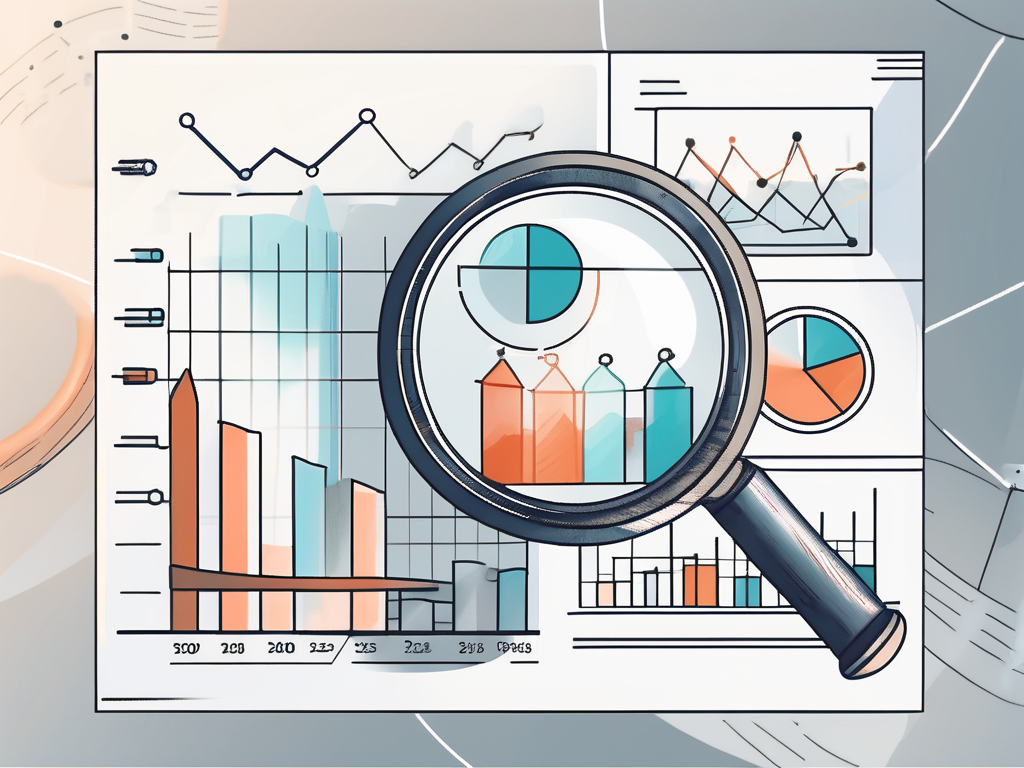The Ultimate Business Intelligence Roadmap: A Step-by-Step Guide

In today's digital age, businesses are inundated with vast amounts of data. To harness the power of this data and gain valuable insights, organizations are turning to business intelligence (BI) tools and strategies. However, implementing and maximizing the benefits of BI requires careful planning and execution. This article aims to provide you with a comprehensive step-by-step guide to creating the ultimate business intelligence roadmap.
Understanding Business Intelligence
Before diving into the intricacies of developing a BI roadmap, it's important to understand the meaning and significance of business intelligence. In simple terms, business intelligence refers to the process of collecting, analyzing, and interpreting data to make informed business decisions. It empowers organizations to gain insights into their operations, customers, and market trends.
Without business intelligence, companies are essentially operating in the dark, making critical decisions based on gut feelings rather than concrete evidence. Therefore, embracing BI is essential for staying competitive and achieving long-term success.
The Importance of Business Intelligence
Business intelligence provides numerous benefits to organizations of all sizes and industries. Firstly, it enables data-driven decision-making, allowing businesses to base their strategies and actions on factual information rather than mere assumptions.
Moreover, BI helps in identifying trends and patterns that are otherwise hidden within the data. This insight allows businesses to capitalize on opportunities and proactively address potential challenges.

Additionally, business intelligence enhances operational efficiency by streamlining processes and improving resource allocation. It enables organizations to identify bottlenecks, eliminate waste, and optimize their operations for maximum productivity.
Finally, BI fosters a culture of collaboration and transparency within an organization. By providing access to real-time data and analytics, employees are empowered to make informed decisions and contribute to the overall success of the business.
Core Components of Business Intelligence
Before embarking on the journey of creating a BI roadmap, it's crucial to understand the core components that constitute a robust business intelligence system. These components include:
- Data Sources: The foundation of any BI system is the data it collects. This data can come from various sources, such as internal databases, external APIs, or third-party data providers.
- Data Warehousing: Data warehousing involves storing and organizing data in a central repository for easy access and analysis. Data warehouses are designed to handle large volumes of data and provide efficient querying capabilities.
- Data Integration: Data integration refers to the process of combining data from various sources into a unified and consistent format. This step is vital to ensure data accuracy and reliability.
- Data Modeling: Data modeling involves organizing data in a structured manner to facilitate analysis and reporting. It includes creating relationships between different data entities and defining data attributes.
- Analytics: Analytics is the process of extracting meaningful insights from the data. This can be done through various techniques such as statistical analysis, data mining, predictive modeling, and machine learning.
- Reporting and Visualization: The final component of a BI system is the ability to present insights in a user-friendly and visually appealing manner. Reporting and visualization tools enable stakeholders to understand complex data through interactive dashboards, charts, and graphs.
When it comes to data sources, organizations have a wide range of options to choose from. They can leverage internal databases that store transactional data, customer information, and other relevant data points. Additionally, external APIs provide access to valuable data from third-party sources such as social media platforms, market research firms, and government databases.
Data warehousing plays a crucial role in the success of a business intelligence system. It involves the process of extracting, transforming, and loading data from various sources into a centralized repository. This repository, known as a data warehouse, is designed to handle large volumes of data and provide efficient querying capabilities. By organizing data in a structured manner, organizations can easily access and analyze the information they need to make informed decisions.
Data integration is a critical step in the business intelligence process. It involves combining data from different sources and ensuring its consistency and accuracy. This process may include data cleansing, data transformation, and data enrichment techniques to ensure that the integrated data is reliable and ready for analysis.
Data modeling is another essential component of a robust business intelligence system. It involves organizing data in a structured manner to facilitate analysis and reporting. This includes creating relationships between different data entities and defining data attributes. By establishing these relationships, organizations can gain a deeper understanding of their data and uncover valuable insights.
Analytics is at the heart of business intelligence. It involves the process of extracting meaningful insights from the data collected. Organizations can employ various techniques such as statistical analysis, data mining, predictive modeling, and machine learning to uncover patterns, trends, and correlations within their data. These insights enable businesses to make informed decisions and drive their strategies forward.
Finally, reporting and visualization tools are essential for presenting insights in a user-friendly and visually appealing manner. These tools enable stakeholders to understand complex data through interactive dashboards, charts, and graphs. By visualizing data, organizations can communicate their findings effectively and facilitate data-driven decision-making.
In conclusion, business intelligence is a powerful tool that empowers organizations to make informed decisions based on data-driven insights. By understanding the importance of business intelligence and its core components, organizations can develop a robust BI roadmap that aligns with their goals and drives their success.
Laying the Groundwork for Your Business Intelligence Roadmap
Before diving into the technical aspects of implementing a BI system, it's crucial to lay the groundwork by identifying your business intelligence goals and assessing your current capabilities.
Identifying Your Business Intelligence Goals
Start by defining clear and measurable objectives for your BI initiative. These goals should align with your overall business strategy and address specific pain points or opportunities within your organization.
Some common BI goals include improving sales performance, enhancing customer satisfaction, optimizing inventory management, or streamlining financial reporting. The key is to ensure that your goals are specific, measurable, achievable, relevant, and time-bound (SMART).
Assessing Your Current Business Intelligence Capabilities
Next, evaluate your existing BI capabilities to determine the current state of affairs. This assessment involves analyzing your data infrastructure, software tools, skills, and resources available within your organization.
Identify any gaps or limitations in your current systems and resources that need to be addressed. This will help you determine the scope and scale of your BI roadmap and identify potential challenges you may face along the way.
Developing Your Business Intelligence Strategy
Once you have a clear understanding of your goals and capabilities, it's time to develop a comprehensive BI strategy. This strategy will define the roadmap and guide the implementation of your BI initiatives.
Choosing the Right Business Intelligence Tools
Selecting the right BI tools is crucial for the success of your roadmap. Consider factors such as scalability, ease of use, integration capabilities, and cost when evaluating different software options.
Common BI tools include data visualization platforms, data integration tools, predictive analytics software, and reporting solutions. Choose tools that align with your goals and suit the needs of your organization.
Building a Data-Driven Culture
A successful BI strategy goes beyond technology and tools. It requires cultivating a data-driven culture within your organization. This involves creating awareness about the benefits of data-driven decision-making and providing training to employees on data analysis and interpretation.
Leadership support and regular communication about the progress and impact of BI initiatives are essential for fostering a culture that values data and encourages its use in decision-making.
Implementing Your Business Intelligence Roadmap
With a solid strategy in place, it's time to put your BI roadmap into action. This section will outline the steps involved in implementing business intelligence within your organization.
Steps to Implement Business Intelligence
Implementing BI involves various stages, including data collection, data integration, data modeling, analytics, and reporting. Each stage requires careful planning and execution.
Start by identifying the data sources that are most relevant to your business objectives. Then, ensure that the data is cleansed, transformed, and integrated into a centralized data warehouse.
Next, build data models that align with your reporting and analysis requirements. This will involve creating relationships between different data entities and defining key performance indicators (KPIs) that will drive your analysis.
Once your data infrastructure is in place, leverage analytics techniques to gain insights from your data. This may involve running statistical analyses, creating predictive models, or using machine learning algorithms.
Finally, develop reports and visualizations that communicate your findings to key stakeholders. Dashboards and interactive tools can be used to present data in a format that is easily understandable and actionable.
Overcoming Common Business Intelligence Challenges
Implementing a successful BI roadmap is not without its challenges. Common hurdles include data quality issues, lack of data literacy within the organization, data governance concerns, and resistance to change.
To overcome these challenges, it's important to prioritize data quality and invest in data governance practices. Educate employees on data literacy and the benefits of BI, and provide continuous training and support to ensure widespread adoption of your BI initiatives.
Measuring the Success of Your Business Intelligence Roadmap
Once your BI system is up and running, it's crucial to monitor its effectiveness and measure its impact on your organization. This will enable you to make data-driven improvements and ensure the long-term success of your BI initiatives.
Key Performance Indicators for Business Intelligence
Identify key performance indicators (KPIs) that align with your BI goals and track them regularly. Some examples of BI KPIs include revenue growth, customer retention rates, inventory turnover, and employee productivity.
Use these KPIs to assess the effectiveness of your BI initiatives and make data-driven decisions to drive continuous improvement.
Continual Improvement of Your Business Intelligence Strategy
Remember that business intelligence is an ongoing journey. Continuously evaluate and refine your BI strategy based on changing business needs and technological advancements.
Regularly gather feedback from users and stakeholders, and use that feedback to enhance your BI roadmap and ensure its alignment with organizational objectives.
By following this step-by-step guide, you'll be well on your way to creating the ultimate business intelligence roadmap. Embrace the power of data, leverage the right tools, and empower your organization to make data-driven decisions that drive growth and success.




